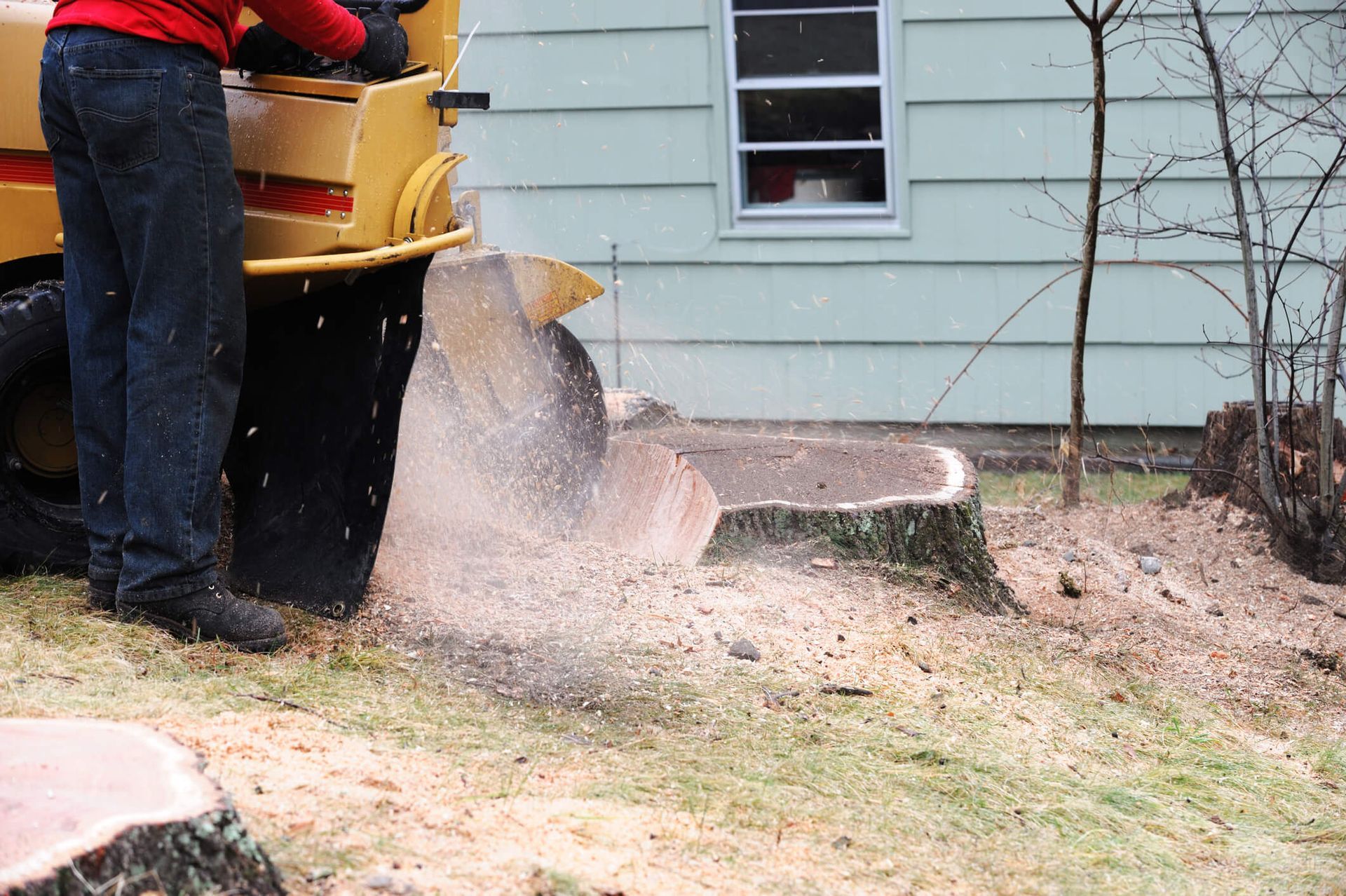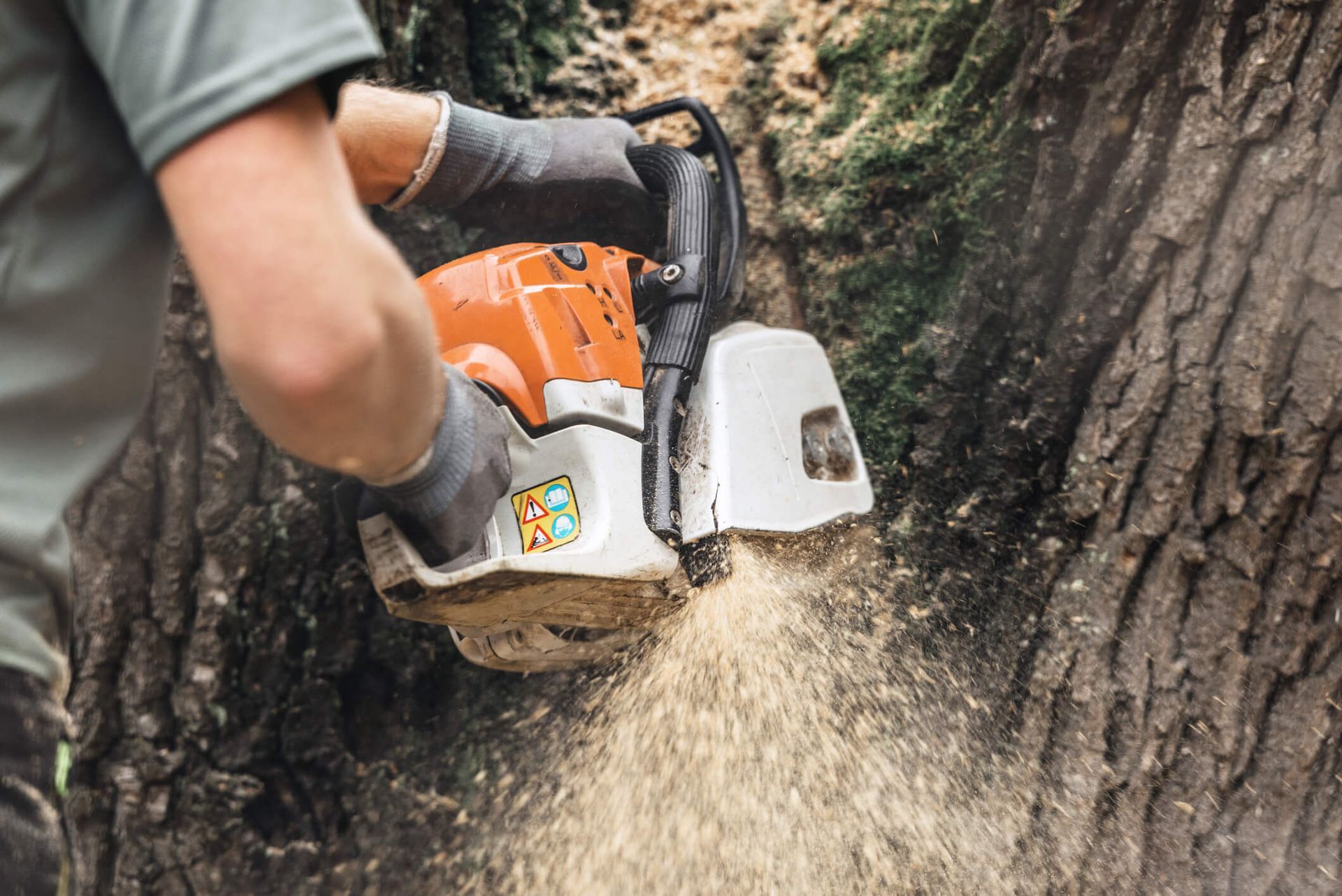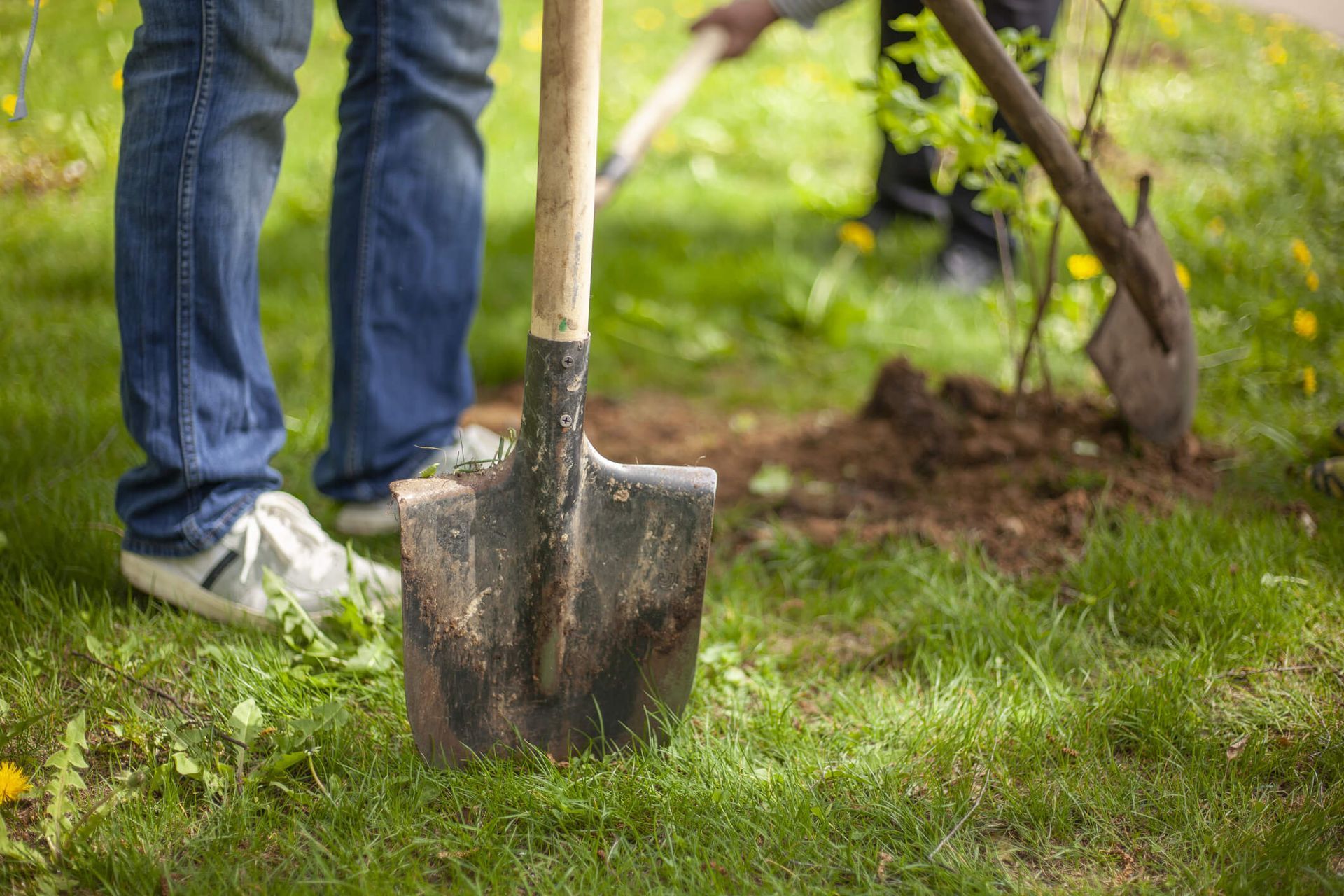Who is Responsible for Fallen Tree Removal
It is dreadful to imagine a tree crashing on a house. Even if nobody is hurt, the structural and property damage may ultimately cost thousands of dollars in repairs, replacements, and other housing.
It's challenging to determine how long the trees have been around your home because they are typically included when you buy the land. Perhaps you've squinted out your window and questioned the age of the trees or how they would fare in bad weather, and then you've pondered whose job it'd be to handle their removal should one fall.
So who is in charge of cutting down fallen trees? Let's explore.
Who is Responsible for a Fallen Tree?
Generally speaking, you are only liable for harm to someone else's property when you know the tree was ailing or dead. This typically means that the degradation is apparent—for instance, summertime limbs devoid of leaves. Another indication that a tree is dying is:
- Throughout the growing season, there are brittle, brown, and yellow leaves or needles, especially in the upper third of the tree.
- Excessive fallen or broken branches
- patches of bark that are missing
- Fungus growth
- holes drilled into the wood by insects
- Cut-off or slimy roots
- significant lean from one direction
Normally, you would not be liable for any invisible harm that only a professional arborist could find. If you are aware of a potentially hazardous tree on your land, take action to remove the risk; otherwise, you may be held responsible for any damage the tree's fall results in.
State and municipal variation
It is important to remember that state and/or local laws governing fallen tree removal or liability may differ. Urban homeowner might have to be more vigilant than rural landowners when monitoring trees along property lines, for instance, as urban regions may have greater care requirements than rural areas. Find out what the requirements are in your region by contacting the arborist section of your municipality.
The general rules listed below are applicable throughout much of the nation. Please be aware that a tree on public property probably belongs to a municipality.
How is responsibility for fallen tree removal determined?
The tree's location and the owner of the property where it fell frequently serve to determine who is responsible for removing a fallen tree. Here are some general guidelines:
- Private Property: If a tree falls on your property, it is generally your responsibility to remove it, regardless of whether it is healthy or dead. You could file a claim with your homeowner's insurance if the tree caused damage to your property. If the tree was initially located on your land and falls onto a neighbor's property, you remain liable for its removal.
- Public Property: If a tree falls on public property, such as a park, sidewalk, or street, usually, removing it falls on the local government or municipality. It is because the government maintains these areas for the benefit of the community.
- Shared Property: If a tree falls on a property shared by multiple owners, such as a boundary tree between two properties, property owners may divide removal duties among themselves. It's essential to check your local laws and regulations to determine who is responsible for removing trees in these cases.
It's important to note that responsibility for fallen tree removal may vary depending on local regulations and specific circumstances. If you need clarification about your responsibility for fallen tree removal, you can consult a local arborist, tree removal service, or your local government for guidance.
Who is responsible for tree removal on public property?
The local government or municipality generally bears the responsibility for removing trees on public property, such as parks, sidewalks, and streets, as the government maintains these areas for the benefit of the community.
Local governments often have a dedicated agency or departments responsible for any instances like tree maintenance, tree removal, and replacement. Suppose you notice a tree on public property that appears to be in hazardous condition or in need of removal. In that case, you can typically report it to the local government or the department responsible for tree maintenance.
It's important to note that removing trees on public property may be subject to specific regulations and guidelines. For example, some communities may require a permit or approval before removing a tree, mainly if considered a landmark or historic tree.
Suppose you need clarification about the responsibility for tree removal on public property in your area. You can contact your local government or consult a local tree care professional for guidance.
Who is responsible for fallen tree removal on private property?
In most cases, the responsibility for removing a fallen tree on private property rests with the property owner. If a tree falls on your property, it is generally your responsibility to remove it and any debris it leaves behind.
It is important to note that if a fallen tree damages someone else's property, such as a neighbor's home or car, you may be liable for the damage. Additionally, if the tree falls onto a public road, the responsibility for removing it may depend on local regulations.
Sometimes, your homeowner's insurance policy may cover removing a fallen tree. Check your policy to see what is covered.
If you are unsure about your responsibility for fallen tree removal, consider consulting with a local arborist or tree removal service for guidance.
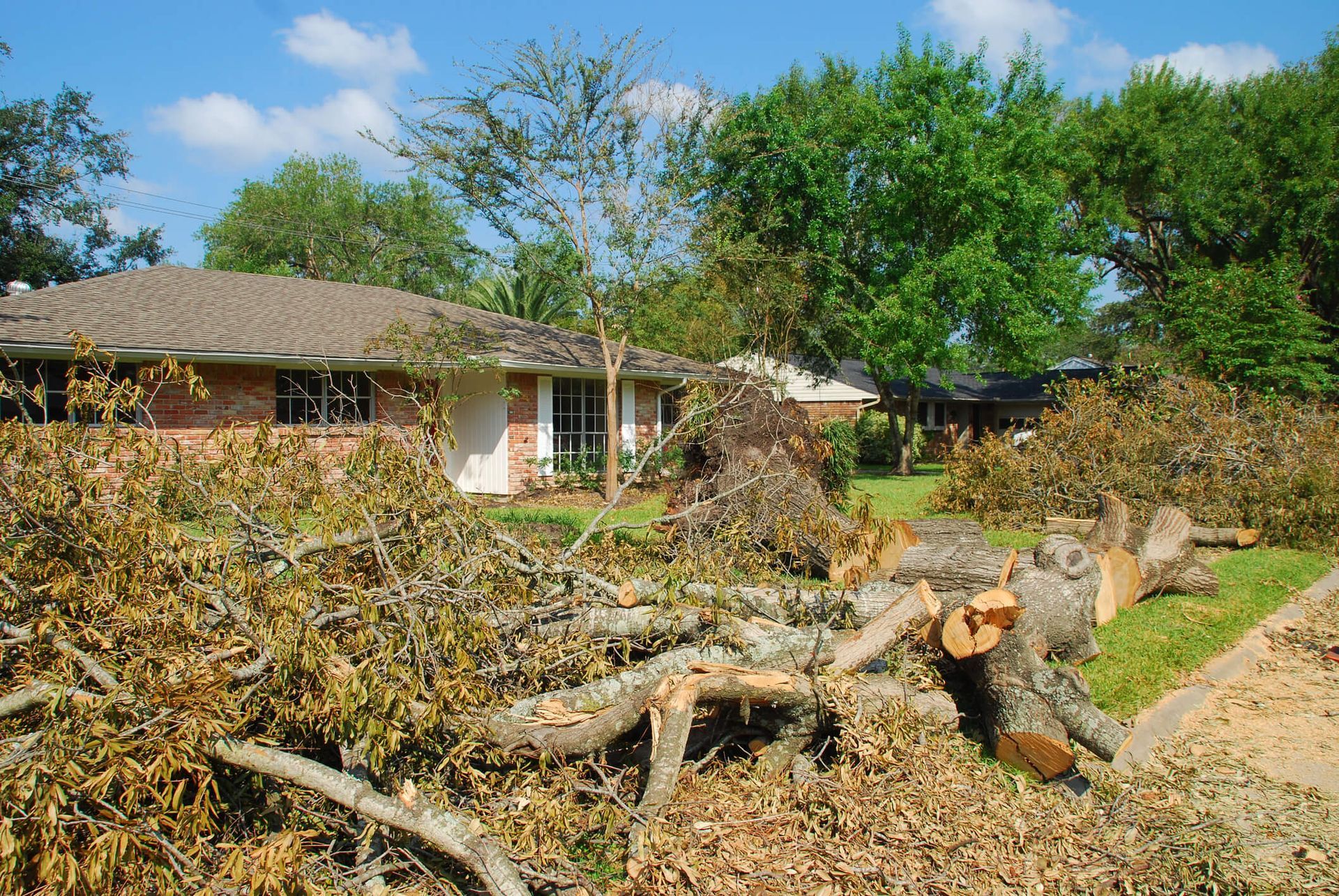
What to Do When The Tree of Your Neighbor Falls on Your Property
There are several important procedures you should take to ascertain who is responsible for such damage, as well as removal costs when a tree that doesn't belong to you falls in your yard.
Call Homeowners’ Insurance
Contact the homeowners' insurance after making sure everyone is okay. Encourage the neighbor to contact their home insurance if at all feasible. We'll give you a rough concept of how most processes work, but policies may differ, so they'll be able to provide you with more particular next actions.
Identify the Cause
Check the tree for any signs of infection, illness, or decay. A decaying tree poses a risk to public safety and exhibits neglect on the part of your neighbor. You might be able to hold your neighbor accountable for the harm to your property if you can demonstrate their negligence.
Consult With a Professional Tree Removal Service
The next step involves getting in touch with a nearby tree removal company to handle the tree. To ensure a seamless transaction, look for a business with experience dealing with homeowners' insurance. However, some policies differ, so before making any reservations, check with your homeowners insurance provider.
Examine Remaining Trees
Next, check to see whether any trees are still present and in good shape. If the tree that fell was sick or infested, then this step is very crucial. If you notice signs of disease in any remaining trees on your neighbor's land, let them know in writing and with documentation so that you have proof in case you have to make a claim later.
Even if things may become tense in this place, it's crucial to maintain composure and respect throughout every one of your communications. Most likely, your neighbors would welcome taking some preventative measures if they too wanted to avoid any more accidents.
What Does Homeowners’ Insurance Cover for Fallen Trees?
In most cases, you may anticipate that your homeowners insurance coverage will pay for at least part of the damage to your home. But, if indeed the tree fell onto your property without causing any structural damage, you might be liable for paying a nearby tree removal service to remove the debris.
Fallen trees are generally covered by homeowners insurance because of:
- Fire damage
- Lightning damage
- Other severe weather events (ice, wind, rain, snow, etc.)
When Do Fallen Trees Not Be Covered by Homeowners Insurance?
But, it's not always the case that insurance companies will pay for both property damage and tree removal costs. You may not be covered completely if a tree falls on the lawn or an open area without harming your property. Also, if you reside in a region that is vulnerable to earthquakes or flooding, you might need supplemental earthquake or flood insurance to cover any damage that can result from a tree falling due to such weather conditions.
Knowing the details of your homeowner's insurance policy will help you determine the coverage you'll get. If there is a cap upon removal costs, that frequently ranges between $500 and $1,000 per tree, your policy will let you know. But, the extent of homeowners insurance coverage for trees that fall to the ground varies on the policy, the state, and occasionally even your municipality.
When creating plans, insurance companies consider the potential of hazards in your location. However, some homeowners might well be covered to a greater extent than others based on the plan or perhaps the local tree species.
What Would Happen If You Didn't Have Homeowners Insurance?
It may be wise to purchase homeowners insurance if you don't already have it. You'll have to spend your own money to perform those repairs or replacements if anything really goes wrong when you require them. Consider a roof that is damaged. The price to replace a roof when a tree falls onto the property and destroys it ranges from $5,700 to $12,300.
What if You Are a Renter?
Things may become somewhat confusing if the tree of your neighbor falls on the house you're renting, but your neighbor isn't to blame. You and the homeowner must first get in touch with their individual insurance providers to find out what is covered. As soon as possible, get in touch with your homeowner and renter's insurance companies so a specialist can assess the issue and establish which policies cover what damage or debris costs.
Fallen Tree Negligence
Your house or even other structures off your property would be covered by your neighbor's insurance carrier if their tree had fallen on your property negligently and caused damage. Yet, if your property is unharmed, you'll probably be charged for the cost of having the fallen tree removed.
The negligence of your neighbor might not be sufficient to hold them accountable for a fallen tree on your house. To get insurance companies to take action, you'll need documentation and their assistance.
You could accuse your neighbor of negligence in the following cases:
- trees that were dead and rotting for a while
- Tree limbs or huge branches that are dead, diseased, or in close proximity to your property
- Unmistakably ill trees that have gone untreated
- Infestations of trees that have not been treated
It's vital to keep in mind that, by alleging carelessness, you can be swimming in uncertain waters. Your neighbor might react if you file a lawsuit. In other words, the neighbor can try to show that you were "contributory negligent." According to the doctrine of contributory negligence, you always had the legal right to trim trees or remove tree branches from your land; as a result, your neighbor is not liable for the overhanging branch's underlying natural cause.
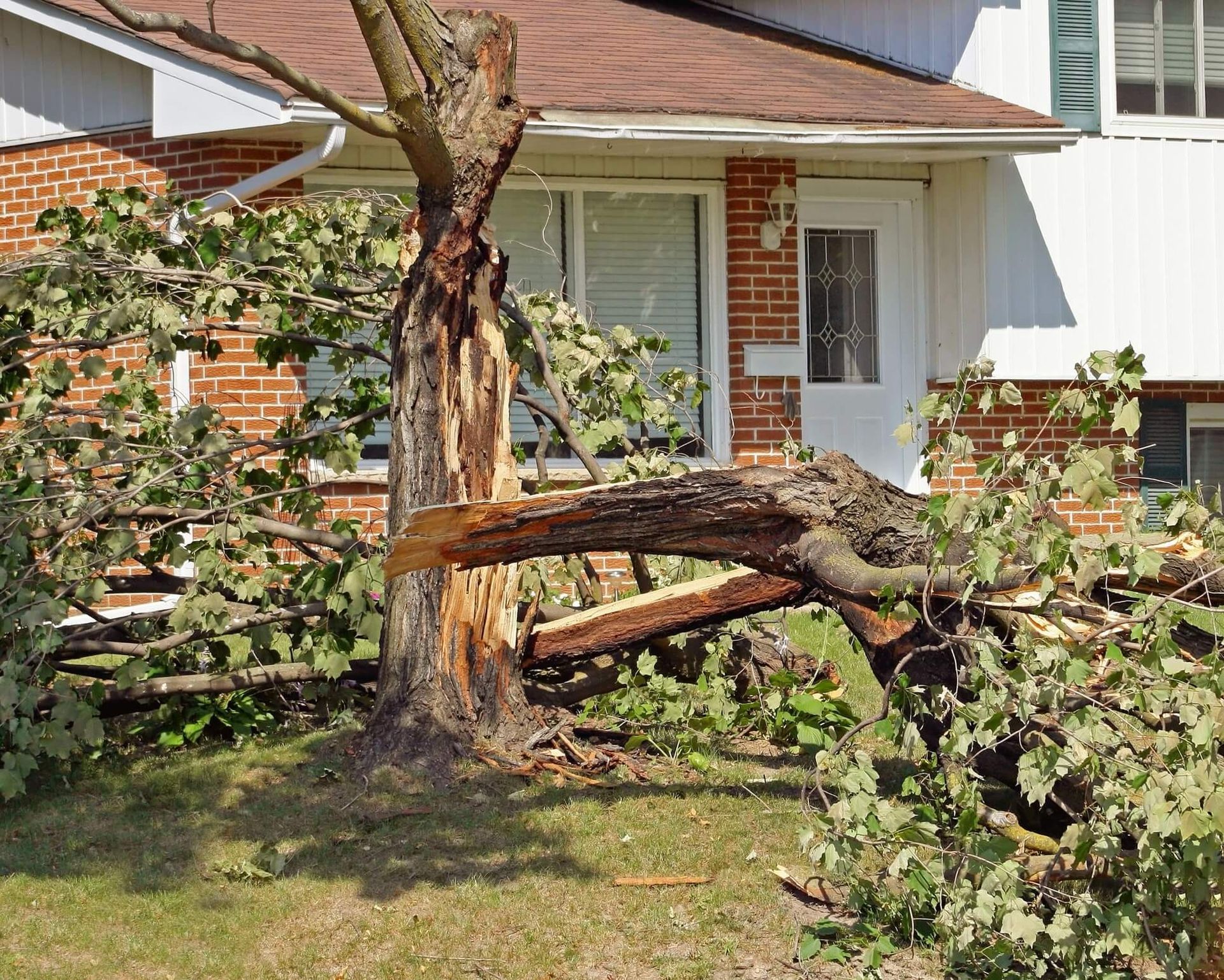
Proving Your Neighbor’s Liability
Documentation or testimony from other neighbors may be necessary to demonstrate that a neighbor is accountable for a downed tree. If you can provide proof that you have been requesting your neighbor to remove a dead, sick, or damaged tree for years, you may be able to establish culpability. Your case may be strengthened if you can provide written evidence of your efforts or confirmation from such a neighbor.
Generally speaking, if you and the other party are unable to reach an understanding, showing negligence is typically best left as a last resort. Making an attempt to establish your neighbor's liability through a suit can be expensive, difficult, but not worth the trouble. Not to add that living next to someone who is bitterly angry makes a less enjoyable neighborhood.
Try to maintain harmony by continuing to carry your homeowners' insurance. In many situations, homeowners insurance will take care of the cost of repairs and tree removal. If you and your neighbor already get along well, you may also try talking to them about splitting the expense of the tree removal or reaching some other kind of understanding to keep peace.
Removal of a Fallen Tree from a Neighbor's Property
You'll likely have to hire a tree expert to remove that tree for you before submitting your claim. Along with any required repairs to your house, the price of tree removal is only a few of the costs you'll have to pay.
Some tree specialists collaborate directly with homeowners' insurance providers after a significant storm strikes a region. However, you'll often need to get in touch with each other individually and make your own arrangements.
To remove any tree within your yard, you must always work with a professional, insured, and bonded tree specialist. A certified tree expert typically has more knowledge and comfort when dealing with homeowner's insurance. You are protected if such a contractor is hurt inside your property and/or you experience any other problems by hiring a bonded and insured tree removal specialist.
The Bottom Line
Although they add greatly to the landscape, trees may often be a huge pain. Keeping an eye on the trees on your property and the ones in your neighbor's yard is crucial to keeping your home secure and free against storm damage, because trees can do such significant harm when they fall.
Is it enjoyable to discuss who is to blame for a fallen tree with your neighbor? Not much, but it's a characteristic of homeownership which nearly everyone encounters at some point. The following are the key ideas to bear in mind:
- You will file an insurance claim with your home insurance provider if the tree falls onto your property or if your property is harmed.
- Their homeowners insurance company will cover the cleanup as well as repair costs if the tree damages or falls on your neighbor's property.
- Your neighbor may file a lawsuit against you if you know a tree on your property is damaged and in danger of collapsing but you didn't have it removed.
Likewise, you have the right to file a lawsuit if your neighbor knew about a dying or dead tree but did nothing to get it removed.
Get Help Removing Fallen Trees Now!
If you're dealing with a fallen tree on your property, knowing who is responsible for its removal is essential to avoid legal or financial issues. Whether you own private property or live in a community where trees fall on public property, understanding your responsibility for tree removal is crucial.
Remember, prompt tree removal of fallen trees is important for your health, safety and to prevent further damage. We at SYS Enterprises Tree Services offer tree services in Charlestown, Indiana, like tree removal services, stump grinding and stump removal. To find out more information and questions, don't hesitate to call us on (502) 724-6950.
FAQs: Who is Responsible for Fallen Tree Removal
1. What should I do if a tree falls on my property?
If a tree falls on your property, assess the situation for safety first. Ensure that no one is injured, and then contact a tree removal service for assistance with removal.
2. Will my homeowner's insurance cover tree removal?
Typically, homeowners insurance may cover tree removal if the tree causes damage to your home or property. However, if the tree falls without causing damage, you might have to cover the removal costs out of pocket.
3. What factors determine who is responsible for a fallen tree?
Responsibility for a fallen tree often depends on where the tree is located and the ownership of the property where it fell. If it falls on your property, you are generally responsible for removal.
4. How can I tell if my neighbor is liable for a fallen tree?
If the tree was dead, diseased, or showed signs of neglect and fell onto your property, your neighbor may be liable. Documentation of the tree's condition before it fell can support your claim.
5. What if a tree from a shared boundary falls?
If a tree falls on a property line, both property owners may share the responsibility for removal. It's advisable to discuss the situation with your neighbor and come to a mutual agreement.
6. Are there local regulations regarding fallen tree removal?
Yes, local laws can vary, so you must check with your municipality or local government to understand the specific regulations regarding tree removal and liability in your area.
7. Can I file a claim if my neighbor's tree falls on my property?
Yes, you can file a claim with your homeowner's insurance, especially if there is damage. Your insurance company may also pursue a claim against your neighbor's insurance if negligence can be established.
8. What if the fallen tree did not cause any damage?
If the tree fell without causing damage, you will likely need to cover the removal costs yourself. Check your homeowner's insurance policy to see if any coverage applies.
9. What are the signs of a hazardous tree?
Signs include brittle or yellowing leaves, excessive fallen branches, missing bark patches, fungi growth, insect holes, or significant leaning. If you notice these signs, consult a professional.
10. How can I prevent potential tree hazards on my property?
Regularly inspect the trees on your property for signs of disease or decay, and consider hiring a professional arborist for an assessment. Proper maintenance can help mitigate risks associated with fallen trees.
